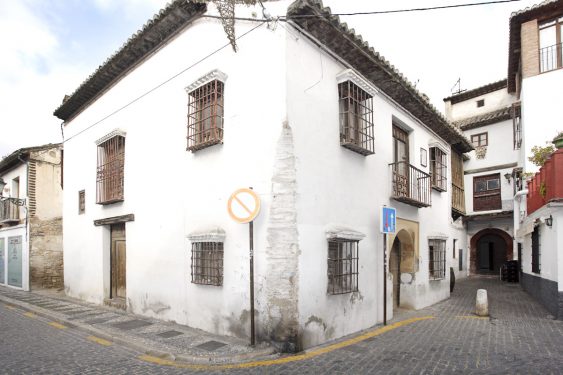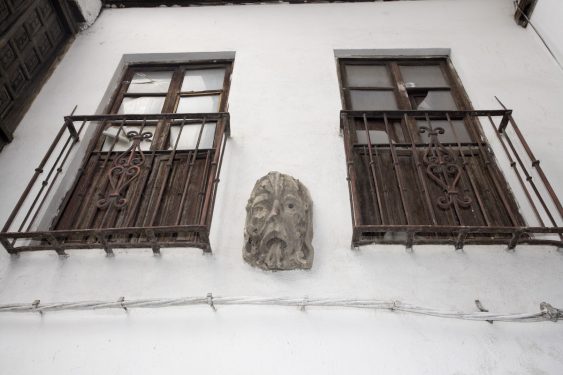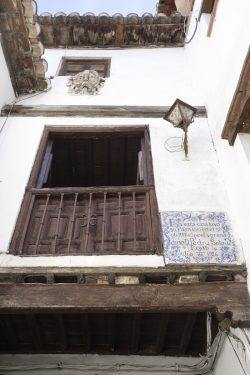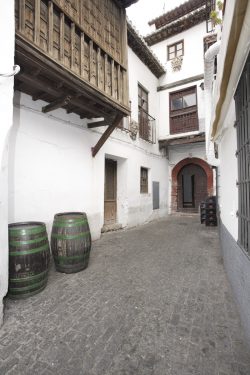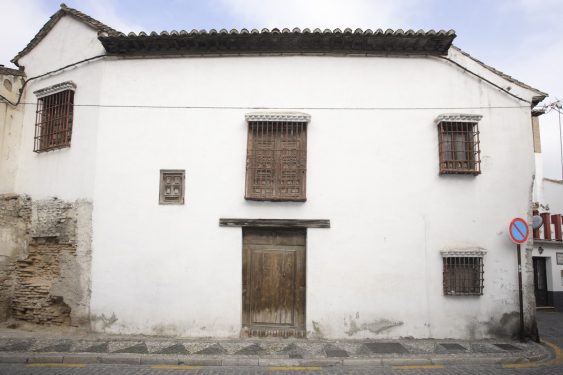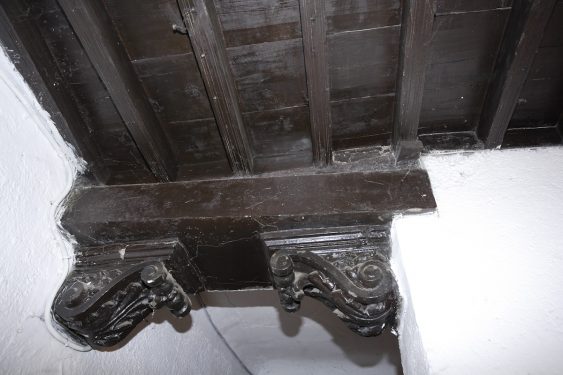House, now in private use, where the 17th century poet Pedro Soto de Rojas lived. The Athenaeum paid tribute to him there in 1926.
On Agua Street, in the Albaycín quarter, is the landscaped and almost secret house where the poet Pedro Soto de Rojas, praised by Cervantes and Lope de Vega, a great friend of Góngora and canon of El Salvador Collegiate, lived. The place is known as the Carmen de los Mascarones (House of the Figureheads) and is linked to Lorca and the group from the Ateneo de Granada who paid tribute to him in 1926 and placed a ceramic plaque of Fajalauza in his memory, which is still preserved and was designed by Hermenegildo Lanz. The house is preserved intact and is privately owned.

The house was built in the first third of the 16th century on plots of land that had previously been a Moorish house. Soto, son of a wealthy family, spent two decades in Madrid as a high-ranking official and held positions linked to the Conde Duque de Olivares. There he met Cervantes and Lope, among other authors of the Golden Age. In 1626, he took the habits of a priest and returned to Granada as a canon of the church of El Salvador, in the Albaycín. In this neighborhood he had his house built with a large garden profusely decorated with fountains and statues that, like most of the houses, jealously guards its interior wealth from the gaze of others. The sculptor José de Mora lived there a few years later.
In the Carmen de los Mascarones, Soto wrote his best-known book, Paradise Closed for Many, Gardens Open for a Few, a title that not only describes the house itself where he resided, but is the “most exact definition of Granada”, according to García Lorca.
In those months prior to the tribute to Góngora at the Seville Athenaeum, where the Generation of ’27 took shape, the members of the Ateneo de Granada wanted to pay tribute to Soto de Rojas, a contemporary of Don Luis himself. Lorca contributed with a lecture on the baroque poet, delivered at the Athenaeum on October 17, 1926. Two days later he read the Eclogue and three madrigals by Soto and even tried to start a critical edition of Closed Paradise which was never printed for lack of money and sponsors.
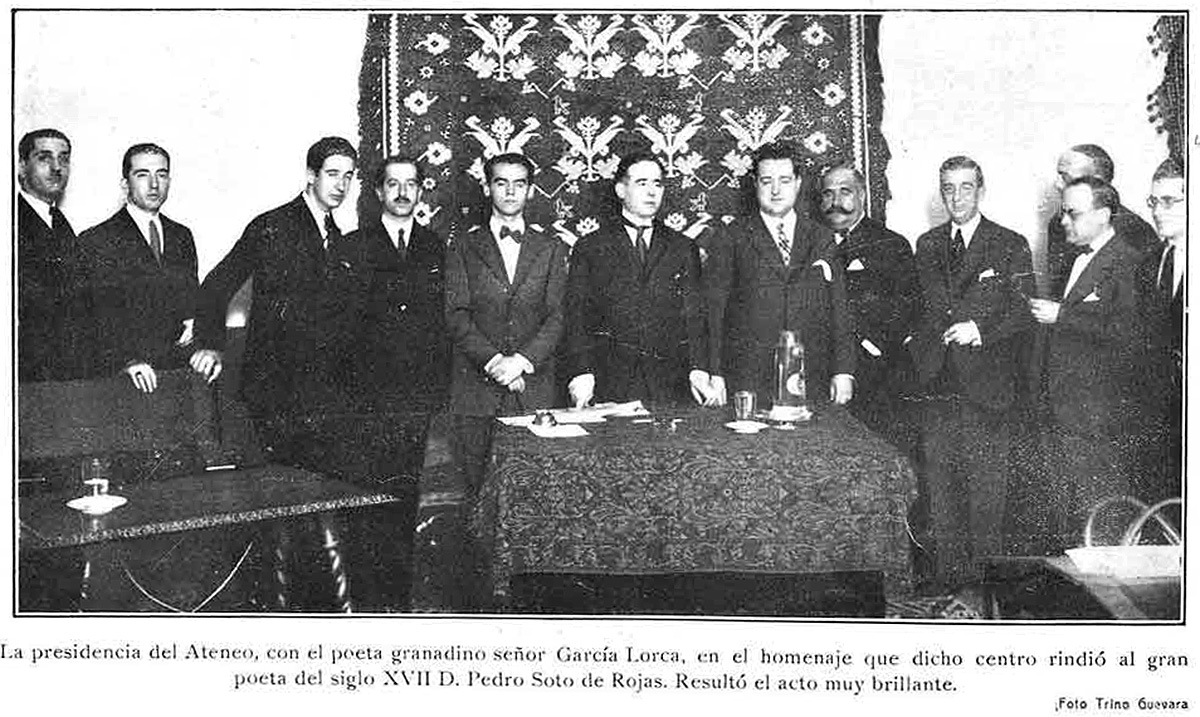
Lorca was unable to attend the tribute paid to Soto by the athenaeists, however, as he was on tour with La Barraca. During the tribute they placed a plaque designed by Hermenegildo Lanz in the Carmen de los Mascarones.
Among the many texts that Lorca dedicated to his city, the one that best reflects the spiritual image he had of it is the speech he dedicated to Soto de Rojas entitled Granada (Closed Paradise for Many). In it he expounds his theory about his hometown’s attachment to the diminutive and its excessive, if lyrical, introversion. Lorca contrasts Granada with other Andalusian cities such as Seville or Malaga.
Soto’s book faithfully reflects the structure of his house in the Albaycín. The seven parts of the book are equivalent to the seven main terraces of the house, which are a reflection of the “Seven Heavenly Mansions”. In each of these parts Soto equates literary devices with the highest level of gardening. In the end, the book is a lyrical copy of the aristocratic Eden where he confined himself by choice.
García Lorca talks about Soto: “Don Pedro Soto de Rojas was a bard from Granada. From the seventeenth century. A disciple of Góngora, he has remained unjustly in the dark color of the anonymous. I am proud to have discovered him and very soon I will publish his Paradise Closed to Many, Garden Open to Few) with some of my notes. This is a wonderful poem. The poem of the garden of Granada”.
(Interviews with José S. Serna published on July 11, 1933 in El Heraldo de Madrid newspaper).
Granada, still and fine, girded by its mountains and definitively anchored, seeks its horizons for itself, takes pleasure in its little jewels and offers in its dull diminutive language , its diminutive without rhythm and almost without grace, if compared to dance. phonetic of Malaga and Seville, but cordial, domestic, endearing. Diminutive scared like a bird, which opens secret chambers of feeling and reveals the most defined nuance of the city (…).
Granada cannot leave her house. It is not like the other cities that are on the shore of the sea or the great rivers, that travel and return enriched with what they have seen. Granada, solitary and pure, shrinks, girdles its extraordinary soul and has no other outlet than its high natural position of stars. For this reason, because she does not have a thirst for adventure, she bends over on herself and uses the diminutive to collect her imagination, as she collects her body to avoid excessive flight and soberly harmonize her interior architectures with the lively architectures of the city.
That is why the genuine aesthetics of Granada is the aesthetics of the diminutive, the aesthetics of tiny things.
The just creations of Granada are the dressing room and the belvedere of beautiful and reduced proportions. As well as the small garden and the small statue (…).
The Granada-born man is surrounded by the most splendid nature, but he does not go to it. The landscapes are extraordinary; but the man from Granada prefers to look at them from his window. He is frightened by the elements and despises the vulgar voyeur, who is nowhere. Since he is a man of fantasy, he is naturally not a man of value. He prefers the soft and cold air of his snow to the terrible and harsh wind heard in Ronda, for example, and he is willing to put his soul in diminutive and bring the world into his room. He wisely realizes that this way he can understand better. He renounces adventure, travel, external curiosities; more often than not he renounces luxury, clothes, the city. He despises all this and adorns his garden. He is withdrawn. He is a man of few friends. (Isn’t the reserve of Granada proverbial in Andalusia?).
Everything has by force a sweet domestic air; but, really, who penetrates this intimacy? That is why, when in the seventeenth century a poet from Granada, Don Pedro Soto de Rojas, returning from Madrid, full of sorrow and disappointment, wrote these words on the cover of one of his books: “Paradise closed to many, open gardens for few”, he is making, in my opinion, the most accurate definition of Granada: Paradise closed to many.
(Granada (paradise closed to many))- Lorca´s location
- Carmen de los Mascarones
- current location
- Carmen de los Mascarones
- ADDRESS
- Calle del Agua (Pagés, 20)
- DETAILS OF THE VISIT
Privately-owned building. It can only be seen from the outside.
